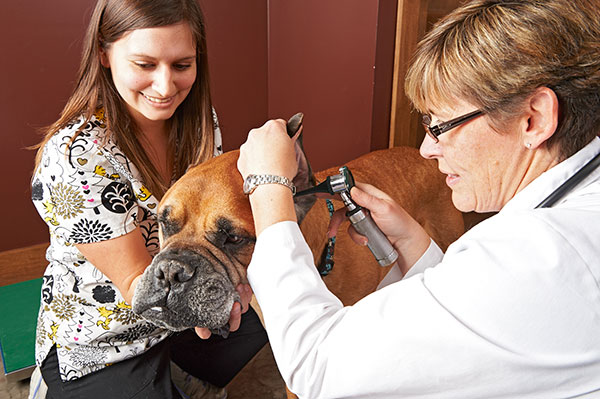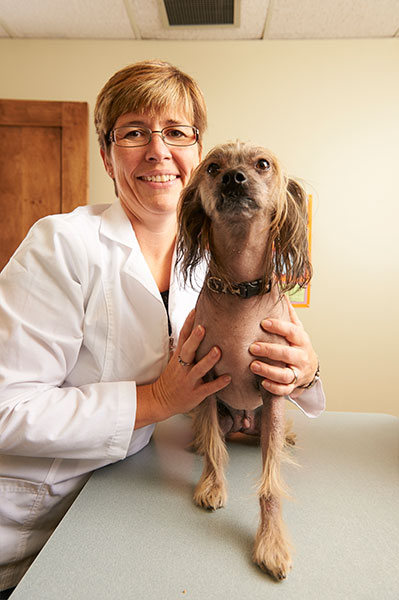Annual Physical Exams
Our pets do not always inform us when something is not quite right. This is not the only obstacle that we face, as animals are very good at instinctively hiding their illnesses and injuries. The annual physical exam allows for early detection of disease. Some problems may not be as noticeable as others especially when we see them on a daily basis. Not all diseases have the same properties and some can have a subtle slow onset. If detected early there is a greater chance of slowing the progression of disease or stopping it altogether which enables pets to live longer healthier lives.
Yearly exams can help your pet live longer
During an annual examination, important information can be gathered and recorded by your veterinarian. We start all annual exams by tracking their weight and collecting current diet information. Changes in weight, vision, hearing, skin & coat, range of motion, heart and/or lung sounds and abdominal palpation can all be an indication of a potentially serious illness. Catching these illnesses at an earlier stage can help your pet live a longer and healthier life.


There are certain steps that you can expect from us during your pet’s annual physical exam. We are here to guide you through the entire process, giving you and your pet peace of mind.
First we will ask you questions about your pet’s health. This helps us determine whether there are specific problems that need to be addressed. Second we will weigh your pet and compare it to their previous weight. A change in diet might be needed to avoid health problems related to obesity or if your pet is losing weight over time, that could be a sign of a medical problem that needs further examination.
Following the questionnaire we will start your pets physical exam. Usually starting at the head, we look at your pet’s eyes, ears, face and mouth. Examining the teeth is especially important, since up to 85% of dogs and cats over four years old have gum disease. We will then examine your pet’s skin and coat for signs of parasites and look for signs of hair loss, oiliness/dryness, shedding, growths or infections. We will also listen to the chest with a stethoscope to make sure there are no issues with the heart or lungs like a heart murmur. The next step is palpating the abdomen. This means that we are feeling for masses, pain or any other abnormalities of the internal organs. Following this, we will examine the legs, looking for signs of lameness, joint swelling or arthritis. Lastly, we will take your pet’s temperature using a rectal thermometer to determine whether or not your pet has a fever.
Pets age differently than us
Unfortunately our pets don’t age at the same rate as us. A year between visits can be a very long time for most pets, but even longer for your senior pet. As they age, the importance of regular check-ups becomes critical for their overall well being. Once your pet reaches the senior stage in their life, we recommend a physical exam every six months to help maintain a healthy lifestyle.


